#Anti-Static PET Film
Text
Everything You Need to Know about Thermoforming
Thermoforming technology is one of the most commonly used molding methods in molded plastic material packaging, it is a thermoplastic sheet (PP/PET/PS/ABS/PVC/PE) as the molding object of the molding technology.
Although the thermoforming process has been developed in the early 20th century, it was not until the 1960s that it began to be vigorously applied to industrial production.
After continuous development and changes, the vacuum forming process has now achieved a high degree of automation and mechanization, through the continuous improvement of the thermoforming equipment, improve the temperature control of the thermoforming machine and the transmission method of the technical difficulties, to solve the high tensile and high-precision pressure forming products process technology, including solving the processing of different plastic materials as well as the thick sheet material processing technology problems.
With the development of the plastic thermoforming industry, thermoforming application areas are becoming more and more extensive, from the beginning of the thin sheet of thermoforming to the present can replace the injection molding machine products of thick plate thermoforming, from the simple thermoforming food trays, electronic trays to the present logistics thermoforming turnover trays, hardware tool carts, cooling water towers, bathtubs, and inwardly ride the car's thermoforming parts and so on, from the original thermoforming packaging products to become a part of the thermoforming product, can say that now plastic thermoforming products are everywhere in our lives. It can be said that now plastic thermoforming products are everywhere in our lives.
Principles of Thermoforming Process
Thermoforming process is a common plastic processing process, which is a process of heating and softening plastic sheet or plastic film, then adsorbing it on the surface of the mold by suction or pressure, and then cooling and molding it. vacuum forming process is widely used in the manufacture of various plastic products, such as plastic pallets, plastic boxes, plastic tableware, plastic toys and so on.
The principle of thermoforming process is to heat the plastic sheet or plastic film to a certain temperature to make it soften, and then adsorb it on the surface of the mold by suction or pressure to form the desired shape. The mold for the suction molding process usually consists of two parts, the upper mold and the lower mold. The space between the upper and lower molds is the molding space. In the pressure forming process, the space between the upper and lower molds is usually an air-tight space where plastic sheets or plastic films are adsorbed onto the surface of the mold by suction or air pressure to form the desired final shape or plastic components.
Commonly Used Materials for Thermoforming
Commonly used materials for thermoforming: PVC, PS, PET, PP.
PVC
PVC sheet is a widely used and popular materials, PVC film can be divided into food grade and industrial grade two kinds, and can be made into transparent, color, anti-static, gold-plated, flocking and other kinds of sheet with the sub vacuum forming, which is mainly characterized by high transparency, good surface luster, less crystalline and easy to sub molding, made of products with a small water line, the use of plant impact resistance, the Taiwan U.S. FDA, Japan's PL Food hygiene standards, made of products widely used in toys, food, electronic products, medicine, electrical appliances, gifts, cosmetics, stationery and other products packaging.
PS
PS hard sheet low density, poor toughness, easy to burn, combustion will produce styrene gas (a harmful gas), so generally used in the production of a variety of industrial trays.
Applications:
PS sheet is a new type of environmentally friendly packaging material developed in recent years. With its excellent vacuum molding performance, good impact resistance, environmental performance and hygiene performance, it is widely used in the fields of medicine, food, toys, electronics and clothing.
PET
Good toughness, high transparency, easy to burn, burning will not produce harmful gases, is an environmentally friendly material. But the price is high, suitable for high-grade products, Europe and the United States, the bubble shell is generally required to use PET hard sheet. But it is not easy to heat sealing, encapsulation is more difficult, in order to solve this problem, people in the PET surface composite on a layer of PVC film, named PETG hard sheet, but the price is higher.
PET important features:
1. Excellent transparency and finish, good display effect.
2. Excellent surface decorative properties, can be printed without surface treatment, easy to press patterns, easy metal processing (vacuum plating metal layer).
3. Good mechanical strength.
4. Good barrier performance to oxygen and water vapor.
5. Good chemical resistance, can withstand the erosion of a variety of chemical substances.
6. Non-toxic, reliable hygiene performance, can be used for food, drugs and medical equipment packaging, and can be Y-ray sterilization of its packaging items.
7. Good adaptability to environmental protection, can be economically and conveniently recycled; its waste incineration treatment, does not produce environmentally harmful substances. Good thermoforming performance, comparable to ordinary PVC sheet, can be vacuum-formed to produce PET thermoforming products with excellent performance; PET sheet is considered to be the ideal packaging material in line with environmental requirements.
PP
PP sheet is made of PP resin through the process of beer, calendaring, cutting edge, etc. It has the characteristics of light weight, bright and calm surface, good heat resistance, high mechanical strength, excellent chemical stability and electrical adiabaticity, and non-toxicity, etc. It can be made into beverage cups, food containers, and other daily necessities after thermoforming.
PP main features:
Can be used for a long time at 100 ℃ and can withstand 121 ℃ high temperature sterilization treatment, moisture-proof performance is outstanding, reliable health performance, widely used in food packaging. It has excellent folding performance.
What are the Steps of Thermoforming Process
Mold Design and Production
Molds are key to the manufacturing process of thermoformed products. It needs to be made by hand or CNC machining, etc., taking into account the size and shape requirements of the product as well as the process flow.
According to user requirements or sample specifications, the first production of good plastic molds, general conditions, are the use of gypsum production of plastic molds, but there are also wood and metal carving products for the mold, plastic production molds with the lowest cost of gypsum molds, followed by plating of copper molds, the most expensive is the aluminum mold.
Gypsum molds made after the first to let it dry naturally or dry completely, and then according to the product surface convex and concave specifics, with 1-2 mm drilling flower does not affect the product packaging model of the low-concave drilling of many small holes, if it is a product such as boxes, but also have to be drilled around the edges of a number of small holes, so that the production of thermoforming, can be pumped out of the air, the mold drilled holes, but also have to be gypsum molds hardening, hardening treatment! The method is to soak the molds in a thick liquid solution of isotopes and then dry them.
Material Selection
According to the material requirements of the product, choose the appropriate plastic sheet material common plastic sheet material are PVC, PE, PET and so on. Before molding thermoforming, the plastic sheet needs to be cut and trimmed to match the mold.
Heating Plastic Sheets
Add the raw material into the thermoforming machine equipment for heating. Melting temperature and time according to different raw materials and product requirements, generally between 150 ° C and 200 ° C. When heated, the raw material gradually soften, transformed into a better plasticity condition.
Forming
The softened plastic is placed over the top of the mold and an air compressor is started to suck out the gas from the mold to rapidly forming plastic sheets. This step keeps the plastic tight against the mold surface for better molding.
Cooling
After the plastic softens and forms, the cooling and solidification process begins. This process requires uniform temperature and pressure on the plastic sheets surface and interior of the plastic to achieve the final effect.
Removing the Product
After the plastic has completely cooled, open the mold and remove the molded components.
Trimming and Polishing
Trim and shape the removed molded components, removing excess plastic and trimming the edges.
Quality Control
Check the appearance quality and size accuracy of the molded products to ensure they meet customer's requirements.
Thermoforming Machine Operation
The thermoforming machine is the core equipment for thermoforming production. During operation, the corresponding workpiece needs to be made according to the size and shape of the product, the material is placed into the upper mold of the thermoforming machine, and the lower mold is placed on the material. Then turn on the heating plate for heating, which is usually completed within 2-5 minutes. Pay attention to the temperature and time during the heating process to avoid overheating or overcooling. After the heating time is over, turn off the heating plate and suck into the lower mold to form the material.
Thermoforming vs. Injection Molding
Injection Molding
1. Advantages: Stable product quality: The injection molding machine automatically controls the temperature, pressure, time and other factors to produce stable product quality and meet the requirements. Injection molding processing with higher pressure can produce precise products with good surface quality and high precision.
At the same time, injection molding is highly variable and applicable to a wide range of materials, including thermoplastics, thermosets and rubber, etc., and automated production can be realized. The injection molding process adopts plastic granules as raw materials, avoiding environmental problems such as dust, waste water and exhaust gas produced by traditional processing methods, and meeting the requirements of environmental protection.
2. Disadvantages: High investment is needed to purchase injection molding machines and molds, and the production process of products requires high technical level and production experience. In addition, the service life of injection molding machine is relatively short and the maintenance cost is high.
Thermoforming
1. Advantages: The advantages of thermoforming process are low cost, high production efficiency, short manufacturing cycle, simple production process, high manufacturing precision, stable product quality and so on. Thermoforming process can produce a variety of shapes of plastic products, such as flat, three-dimensional, curved surface, etc., can meet the needs of different customers. Thermoforming process of plastic products have good wear resistance, corrosion resistance, high temperature resistance, low temperature resistance, pressure resistance and other characteristics, widely used in various fields.
Thermoforming process method is simple, the equipment needed is simpler than injection molding, the cost is also lower, the process requirements are lower, the fault tolerance rate is high, and the processing process can be quickly adjusted. Moreover, thermoforming can produce larger size products, which is applicable to a wide range of products.
2. Disadvantages: Thermoforming processing pressure is low, precision and surface quality is relatively poor compared to injection molding. At the same time, can only process thermoplastic plastics, and thermosetting plastics and other materials are not applicable.
Comparison of Injection Molding and Thermoforming
Injection molding requires high investment, but the surface quality of the product is good and the precision is high, while the cost of thermoforming is relatively low, but the surface quality and precision are worse.
The material variability of injection molding can be strong, while automated production can be realized, while the thermoforming process can only process thermoplastic materials.
Injection molding processing requires a higher level of craftsmanship than thermoforming processing.
Application of Thermoforming
Thermoforming products have a wide range of applications. Thermoforming products can be made into different shapes and sizes according to the needs of the products, which are suitable for different fields.
For example, it can be used to make furniture and daily necessities in the household field, electronic shells and panels in the electronic field, medical devices and packaging in the medical field, and automobile parts and interior decoration in the automobile field. With the continuous development of various fields, the demand for vacuum forming products will be more and more, which provides a broad market space for the development of the thermoforming industry.
Thermoforming process has a wide range of applications, mainly used in the following areas
1. Packaging industry: Thermoforming can produce a variety of shapes of plastic food packaging boxes, plastic trays, plastic bags, etc., widely used in food, medicine, cosmetics, electronic products and other industries.
2. Household industry: Thermoforming can produce a variety of shapes of plastic household goods, such as plastic chairs, plastic tables, plastic storage boxes, etc.
3. Toy industry: Pressure forming can produce a variety of shapes of plastic toys, such as plastic blocks, plastic puzzles, plastic models, etc.
4. Automotive industry: Thermoforming can produce various shapes of automotive interior parts, automotive exterior parts, automotive parts and so on with vacuuming forming, pressure forming or twin sheet forming.
Conclusion
The continuous innovation and development of thermoforming technology provides new opportunities for the thermoforming industry With the progress of science and technology and the change of product demand, thermoforming technology is also constantly innovating and improving.
At present, with the enhancement of environmental protection consciousness, green and environmentally friendly thermoforming materials and manufacturing processes have become the hotspot of the industry. Based on this, the thermoforming molding industry can develop environmentally friendly thermoforming molding products by introducing new materials and processes to meet the market demand and gain a competitive advantage.
The specialization level of the thermoforming industry in terms of process and equipment is also improving With the continuous development of the thermoforming process, the performance of the thermoforming machinery and equipment is also improving the degree of automation, the production efficiency and product quality have also been significantly improved At the same time, the specialization of the thermoforming technology is also becoming more and more demanding, requiring practitioners to have the relevant professional knowledge and skills. These positive factors will further promote the development of the thermoforming industry.
As an important method of manufacturing plastic products, thermoforming has a wide range of applications, good performance and quality as well as opportunities for continuous innovation and development. With the development of various industries and growing consumer demand, the thermoforming industry is expected to achieve greater development in the future.
However, it should be noted that the thermoforming industry is also facing challenges such as intensified market competition and technological upgrading, and it needs to continuously improve its competitiveness and innovation ability in order to achieve an advantageous position in the fierce market competition.
0 notes
Text
Technology ultra-thin shock-absorbing cushioning transparent film, providing excellent cushioning protection solutions for valuable electronic items
Background: Logistics Risks
With the rapid development of the logistics industry, hundreds of millions of valuable electronic items such as cell phones, tablets and computers are transported globally every year. However, due to bumps and collisions during transportation, valuable electronic items are often exposed to the risk of impact and collision, which not only brings large economic losses to logistics companies, but also makes the image of brand owners in the minds of consumers greatly reduced.

ACF-SH sheet and ACF-TM film were born out of the urgent need to find a material that could provide all-around protection for valuable electronic items: ACF - Impact Protection Solutions for Electronic Items.
SH sheet and TM film
SH sheet has a wide range of uses, including cushioning for packaging liners and electronic component protectors. It is highly adjustable, highly designable, and can be customized to meet the needs of different products, providing excellent cushioning and shock protection for all types of electronic products.
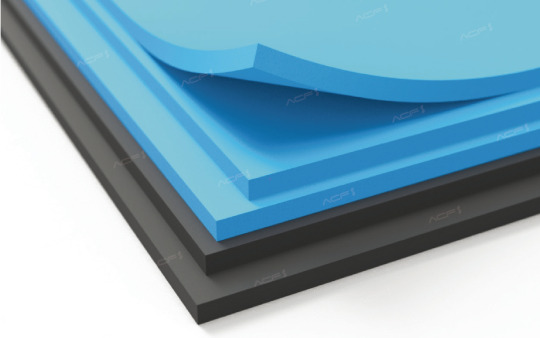
TM film is different from SH sheet, TM film for screen, lens and glass protection, is a transparent PET film as a substrate, composite ACF material for the impact protection role of transparent film, mainly used for electronic products screen protection, lens transportation and shipping protection, automotive glass protection.

TM Film Advantages
During transportation, whether it is a slight bump or an accidental collision, TM film can quickly and effectively absorb the impact and disperse the energy to a larger area, thus reducing the damage to the product. According to ACF's experimental data, TM film with 0.1mm thickness can absorb 44% of the impact energy. In addition to excellent drop resistance, ACF-TM has other outstanding properties.
High Light Transmission Ensures Clear Display
For electronic items such as cell phones and tablets, the clarity of the screen is crucial, and TM film has high light transmission to ensure that the screen content is clearly visible. Even when used under bright light, there is no reflection or blurring, providing users with a more comfortable visual experience. According to tests, the light transmission rate of TM film is as high as 88%, which is higher than the light transmission rate of ordinary protective film.

Smooth surface does not easily attract dust and dirt
In daily use, cell phones, tablets and other valuable electronic items are prone to dust and dirt, which affects their aesthetic appearance. the TM film has a smooth surface that does not easily attract dust and is easy to clean. Users only need to gently wipe it with a cloth to restore its bright and new appearance. This feature gives TM film a significant advantage in maintaining the aesthetic appearance of the product.

Anti-static to prevent dust contamination
Static electricity has always been a headache in the electronics industry. Static electricity may not only lead to equipment damage, but also affect the performance and stability of the product.TM film has anti-static properties, which can effectively avoid the adverse effects of static electricity on the product.
Tight fit ensures product stability
TM film has excellent adhesion to various surfaces, and can be tightly adhered to the display of cell phones, tablet PCs or other critical areas to ensure the stability and durability of the product. The non-degumming nature of this adhesion makes TM materials ideal for long term use.
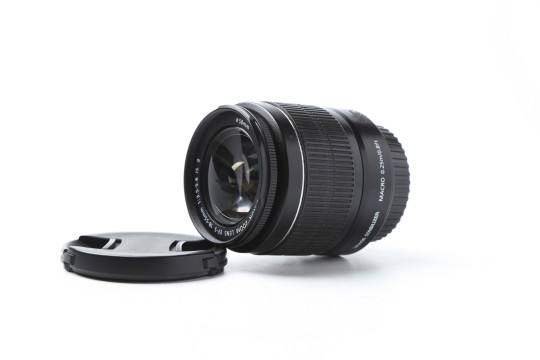
By using SH sheets and TM films made of ACF materials, it not only reduces the risk of damage to electronic products during transportation, but also provides consumers with a safer and more secure shopping environment. At the same time, it also provides a more reliable solution for logistics companies and brand owners to ensure that products remain intact during transportation and reduce the risk of economic loss.

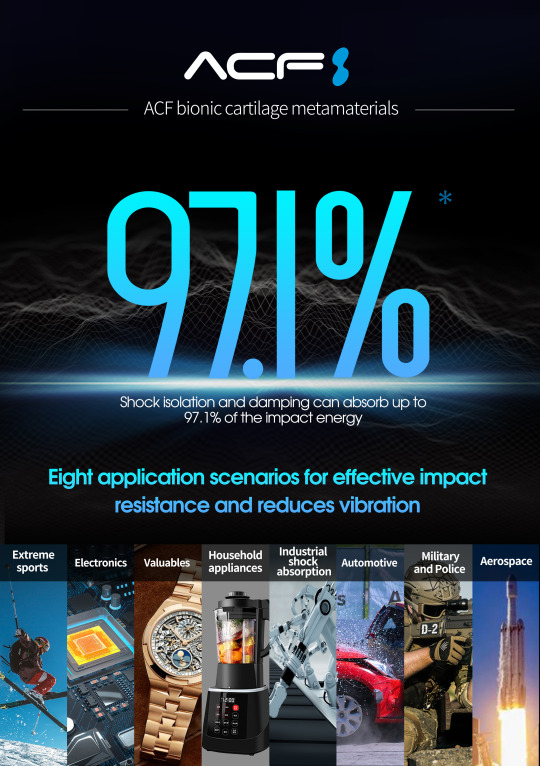
400-6543-699
www.acf.com
0 notes
Text
Anti-Static Films Market Forecast 2023-2032: Market Size, Drivers, And Trends

The Anti-Static Films Global Market Report 2023, provides comprehensive information on the anti-static films market across 60+ geographies in the seven regions - Asia-Pacific, Western Europe, Eastern Europe, North America, South America, Middle East, Africa for the 27 major global industries. The report covers a ten year historic period – 2010-2021, and a ten year forecast period – 2023-2032.
Learn More On The Anti-Static Films Market’s Growth:
As per The Business Research Company’s Anti-Static Films Global Market Report 2023, the market size grew from $0.57 billion in 2022 to $0.61 billion in 2023 at a compound annual growth rate (CAGR) of 6.7%. The Russia-Ukraine war disrupted the chances of global economic recovery from the COVID-19 pandemic, at least in the short term. The war between these two countries has led to economic sanctions on multiple countries, a surge in commodity prices, and supply chain disruptions, causing inflation across goods and services, and affecting many markets across the globe. The anti-static films market size is expected to grow to $0.76 billion in 2027 at a CAGR of 5.7%.
Get A Free Sample Of The Report (Includes Graphs And Tables):
The anti-static films market is segmented:
1) By Material Type: Polyethylene (PE), Polyethylene Terephthalate(PET), Polyvinyl Chloride (PVC), Other Material Types
2) By Application: Bags And Pouches, Liners, Wraps, Tapes, Clamshells, Other Applications
3) By Industry Vertical: Electronics, Pharmaceutical And Healthcare, Automotive, Other Industrial Verticals
North America was the largest region in the anti-static films market in 2022.
The table of contents in TBRC’s anti-static films market report includes:
1. Executive Summary
2. Market Characteristics
3. Market Trends And Strategies
4. Impact Of COVID-19
5. Market Size And Growth
6. Segmentation
7. Regional And Country Analysis
.
.
.
27. Competitive Landscape And Company Profiles
28. Key Mergers And Acquisitions
29. Future Outlook and Potential Analysis
Learn About Us:
The Business Research Company is a market intelligence firm that pioneers in market, company, and consumer research. TBRC’s specialist consultants are located globally and are experts in a wide range of industries that include healthcare, manufacturing, financial services, chemicals, and technology. The firm has offices located in the UK, the US, and India, along with a network of proficient researchers in 28 countries. Through the report businesses can gain a thorough understanding of the market’s size, growth rate, major drivers and leading players.
Contact Us:
The Business Research Company
Europe: +44 207 1930 708
Asia: +91 88972 63534
Americas: +1 315 623 0293
Email: [email protected]
Follow Us On:
LinkedIn: https://in.linkedin.com/company/the-business-research-company
Twitter: https://twitter.com/tbrc_info
Facebook: https://www.facebook.com/TheBusinessResearchCompany
YouTube: https://www.youtube.com/channel/UC24_fI0rV8cR5DxlCpgmyFQ
Blog: https://blog.tbrc.info/
Healthcare Blog: https://healthcareresearchreports.com/
Global Market Model: https://www.thebusinessresearchcompany.com/global-market-model
#global anti-static films market#anti-static films market#anti-static films industry#anti-static films market size
0 notes
Text
Blister material of automatic blister packaging machine
Automatic blister packaging machine is a general term for producing plastic products by blister technology and packaging products with corresponding equipment. Blister products mainly use high-quality flocking, PVC, PET, PP, PS, GAG and other plastic materials to produce high-grade and various specifications of blister packaging for electronics, stationery, toys, hardware, food, daily packaging for gifts, handicrafts, etc.

Blister material of automatic blister packaging machine:
1. PVC sheets have high toughness and are not easy to burn. Chlorine gas will be produced when burned, which will have a certain impact on the environment. PVC is easy to heat seal, and can be sealed with a sealing machine and high frequency. It is the main raw material for the production of transparent plastic products.
PVC sheet is a widely used and popular material. PVC film can be divided into two types: environmental protection and non-environmental protection. It can be made into transparent, colorful, anti-static, gold-plated, flocking and other blister packaging products. Its main features are high transparency, good surface gloss, few crystal points, small water marks, wide application, strong impact resistance, and easy molding. The products are widely used in toys, food, electronic products, medicine, electrical appliances, gifts, cosmetics, Outer packaging of stationery and other products.
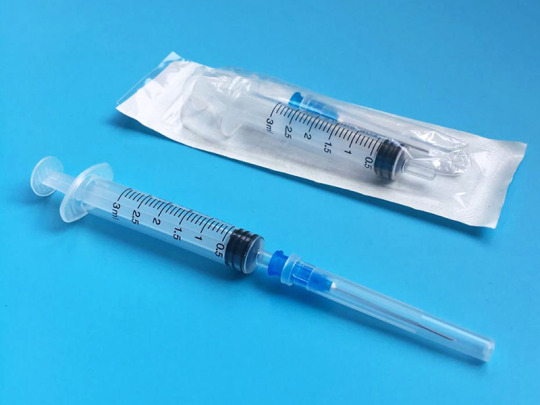
2. PS hard sheet has low density, poor toughness, and is easy to burn. It will produce styrene gas (hazardous gas) when burned, so it is generally used to produce various industrial blister trays. PS sheet is a new type of environmentally friendly packaging material developed in recent years. With its excellent thermoforming performance, good environmental protection performance and hygienic performance, it is widely used in medicine, food, toys and electronics.
3. PET hard sheet has good toughness and is a new type of material developed in recent years. With its excellent toughness, high strength, high transparency, and recyclability, it is easy to burn and does not produce harmful gases when burned. It is an environmentally friendly material and PVC is gradually banned, but the price is high, and it is suitable for high-end plastic products. Blister blisters in European and American countries generally require PET material, but its high thermal melting point brings great difficulties to high-frequency packaging. In order to solve this problem, people put a layer of PVC film on the surface of PET, named PETG, but the price is higher. Mainly used in electronics, food, toys, color box windows, collar holders, shoe packaging, etc.

Its advantages are as follows: it has excellent transparency and smoothness, and the display effect is good. Excellent surface decoration performance, can be printed without surface treatment, easy to press pattern, easy to metal treatment (vacuum metallization layer). Has good mechanical strength. Good barrier properties to oxygen and water vapor. It has good chemical resistance and can withstand the erosion of various chemical substances. Non-toxic, reliable hygienic performance, can be used for packaging of food, medicine and medical equipment, and can be sterilized by Y-rays. It has good adaptability to environmental protection and can be recycled economically and conveniently; when its waste is incinerated, no harmful substances that endanger the environment will be produced. PET sheet is considered to be an ideal packaging material that meets (ROSH) environmental protection requirements.
0 notes
Text
Erucamide Market 2023 Ongoing Trends and Recent Developments | Tianyu Oleochemical, Croda Sipo, Nipo Fine Chemical, Weike Axunge Chemistry, Alinda Chemical, etc
The erucamide market refers to the industry involved in the production, distribution, and sale of erucamide, which is a type of fatty acid amide. Erucamide is derived from erucic acid, a monounsaturated omega-9 fatty acid that is commonly found in certain plant oils, such as rapeseed oil.
Erucamide is widely used as a slip agent or lubricant in various industries, primarily in the production of plastic films and packaging materials. It is valued for its excellent anti-blocking and anti-static properties, which help to reduce friction and enhance the processing and handling characteristics of plastic films. Some key applications of erucamide include:
Free Download Link:-https://www.marketinforeports.com/Market-Reports/Request-Sample/436082
Plastic films: Erucamide is extensively used as a slip agent in the production of plastic films, including polyethylene (PE) films, polypropylene (PP) films, and polyethylene terephthalate (PET) films. It helps to improve the surface smoothness of the films, prevent blocking (adhesion between film layers), and facilitate their winding, printing, and converting processes.
Packaging materials: Erucamide is incorporated into various packaging materials, such as bags, pouches, and laminated films. It provides a low coefficient of friction, allowing easy opening and handling of the packages. Erucamide is particularly beneficial in applications where the sliding or separating of surfaces is desired, such as in food packaging.
Printing inks: Erucamide is utilized as a lubricant in printing inks to improve their flow properties, prevent clogging of printing equipment, and enhance the print quality. It helps to reduce friction during the printing process and ensures a smooth and consistent ink transfer onto the substrate.
Adhesives and coatings: Erucamide is sometimes added to adhesives and coatings formulations to enhance their slip and anti-blocking properties. It aids in the application and bonding processes, reducing the sticking or blocking of surfaces.
The erucamide market is driven by the growth of the packaging industry, particularly the flexible packaging sector. Increasing demand for convenient and lightweight packaging solutions, as well as the expansion of e-commerce and online retailing, have contributed to the rising usage of plastic films and packaging materials. Consequently, the demand for slip agents like erucamide has also increased.
Major producers and suppliers in the erucamide market include companies such as Croda International Plc, Fine Organics Industries Ltd., and Nippon Fine Chemical Co., Ltd. These companies invest in research and development to improve the performance of erucamide and develop innovative solutions to meet the evolving needs of the packaging and plastics industries.
In summary, the erucamide market plays a crucial role in the production of plastic films, packaging materials, printing inks, adhesives, and coatings. The market growth is driven by the demand for slip agents that improve the processability and performance of these materials. As the packaging industry continues to expand and evolve, the erucamide market is expected to grow steadily.
0 notes
Text
0 notes
Text
STAND UP POUCH BAG, SOUP BAG, ALUMINUM METALLIZED POUCH,CHOCOLATE POUCH, DOYPACK,LIQUOR BAG,COOLER
(348)
Recyclable Snack Chocolate Bar Snack Plastic Resealable Zipper Bag With Stand Up Pouch, gallon storage bagsContact Now
Recyclable Snack Chocolate Bar Snack Plastic Resealable Zipper Bag With Stand Up Pouch, Gallon Storage Bags Item: stand up zipper bag for bread/candy/fruits Size&thickness: Custom based on your requirement ... Read More
2022-03-24 14:26:48
Nozzle bags, foil pouch, Aluminum Foil Jumbo Bags With Discharge Spout Eco Spout Bag Aluminium Spout PouchContact Now
Nozzle Bags, Foil Pouch, Aluminum Foil Jumbo Bags With Discharge Spout Eco Spout Bag Aluminium Spout Pouch Transparent packaging is a common material in certain industries. The packaging style of transparent ... Read More
2022-03-24 14:21:23
Easy Tear Zipper Top Coffee Stand Up Foil slider Bag Side Gusset Bags Square Block Flat Bottom ziplock PouchContact Now
Easy Tear Zipper Top Coffee Stand Up Foil Slider Bag Side Gusset Bags Square Block Flat Bottom Ziplock Pouch New Color Scheme Green Custom Doypack Matte Black White Stand Up Doypack Zip Lock 3x4 Food Mylar ... Read More
2022-03-24 14:01:00
Matte Reusable ziplock Square Box Flat Bottom Aluminum Foil Lined Kraft Paper Bag With WindowContact Now
Matte Reusable Ziplock Square Box Flat Bottom Aluminum Foil Lined Kraft Paper Bag With Window Bag style Personalized Zip Lock Silver Mylar Aluminum Foil Bags Material OPP/CPP,PET/CPP,PET/PE,PET/VMPET/CPP,PET... Read More
2022-03-24 13:53:03
Seasoning Powder Flour Condiment Stand Up Pouch Soup Spice Packaging Bag With Window, Soup Bag, Retort pouchContact Now
Seasoning Powder Flour Condiment Stand Up Pouch Soup Spice Packaging Bag With Window, Soup Bag, Retort Pouch In terms of tamper proof packaging, waste disposal, and drug transfer, medical and pharmaceutical ... Read More
2022-03-24 13:47:24
Stand Up Zipper Oven Microwave Cooking Bag, Retort Pouch, Microwave Bag For Liquid Organic Soup PackagingContact Now
Stand Up Zipper Oven Microwave Cooking Bag, Retort Pouch, Microwave Bag For Liquid Organic Soup Packaging Product Name Side Transparent Food Gradient Color Portable Self-Sealing Bag Stand Up Pouch Material BOPP ... Read More
2022-03-24 13:25:07
Gradient Color Laser Jewelry Sealed Ziplock Packing Bag, Mobile Phone Case, Acne Patch Cosmetic pouch bagsContact Now
Gradient Color Laser Jewelry Sealed Ziplock Packing Bag, Mobile Phone Case, Acne Patch Cosmetic Pouch Bags Product Name Hot Sell Spot Gradient Color Laser Jewelry Sealed Ziplock Packing Bag Material BOPP/PET/PE ... Read More
2022-03-24 13:22:13
Jumbo Alumninum Foil Nylon Bags, Jumbo foil cover Bag, Bulk Aluminum Foil liner, stand up Container ton bagsContact Now
Jumbo Alumninum Foil Nylon Bags, Jumbo Foil Cover Bag, Bulk Aluminum Foil Pouch, Stand Up Container Bag 20+ years Experience 20000㎡ Factroy Space US$ 20,000,000 Annual Sales 60+ Production lines 4 Workshops 150... Read More
2022-03-24 13:05:17
Packing Electronic PCB Static sheilding ziplock Vacuum Plastic Pouch Esd Moisture Barrier Aluminum BagContact Now
Packing Electronic PCB Custom Printed Ziplock Vacuum Plastic Pouch Esd Moisture Barrier Aluminum Bag Regardless of the size of the business, printed mail bags are a great way to send small items cheaply without ... Read More
2022-03-24 11:23:51
Printed Anti-Static LDPE Foil ESD Anti Static Shielding Antistatic Moisture Barrier ESD Antistatic BagContact Now
Printed Anti-Static LDPE Foil ESD Anti Static Shielding Antistatic Moisture Barrier ESD Antistatic Bag The ziplock bag is made of polyethylene (LDPE) and high-voltage linear polyethylene (LLDPE) through film ... Read More
#bags#biodegradable#packaging#packaging design#pouches#gift bags#bagease#food freezer oven bags#packing list bubble mailer envelopes#packs
0 notes
Video
Printable DTF Film looking for sales partner in your local,
our film have the following,
Normal DTF Film: Plain Screen Film; Skin Film; Rubberized Film.
Unique DTF Film:Glossy Film; Glitter Film; Laser&Hologram Film
Hot peeled DTF film,printable cold peeled film, Plain screen style, rubber style, Skin Style,glitter style , Laser style film;
welcome to inquire us: hot peeled film, printable cold peeled film, warmer peeled dtf transfer film, instant peeled dtf transfer paper, Split second peeled direct to film transfers.
Non Static PET film, anti-static PET let the film move stable
Hot peeled film, warmer peeled film, cold peeled film
rubberized film glitter Directly to Film dtf transfer film
Hot Peeled Printable DTF Film; Cold Peeled DTF Film glitter DTF film
#DTF#dtfprinting#DTFfilm#directtofilm#digital printing#DTF film#digital transfer film#transfer paper#PET film#transfer prints#glitter DTF film#glossy DTF film#matte film#laser DTF Film#hologram DTF Film
0 notes
Text
Additive Masterbatch Market Trends, Active Key Players And Growth Projection Up To 2027
Market Research Future (MRFR)’s latest study projects that the global additive masterbatch market is expected to hold a significant growth in the market where it is estimated that the additive masterbatch market revenue would be $6.28 billion by 2027 with a CAGR of 8.2%. The additive masterbatch market is poised to witness an upsurge in demand owing to its extensive use in the coloring of raw polymer during the manufacturing process of plastics. It has also developed an application in enhancing the properties of base plastics such as antifouling, ultraviolet resistance, anti-static, flame retardant, etc.
The swift shift towards polymers from metals in industries such as automotive, building and construction, consumer goods, packaging, etc. is anticipated to augment the additive masterbatch market through the forecast period. Additionally, the rapid industrialization of emerging country-level markets across the world is prognosticated to catapult the market on an upward trajectory.
The growth of the retail sector is passively influencing the proliferation of additive masterbatch market by fueling demand from the packaging industry. The trend is anticipated to continue over the next couple of years.
Market Segmentation:
By type, the global additive masterbatch market is segmented into antimicrobial additive masterbatch, flame retardant additive masterbatch, anti-oxidant additive masterbatch, and others.
By carrier resin, the additive masterbatch market has been segmented into polypropylene (PP), polystyrene, polyethylene terephthalate (PET), polyethylene (PE), polyvinyl chloride (PVC), and others.
By end-use industries, the global additive masterbatch market is segmented into packaging, automotive, consumer goods, building & construction, agriculture, and others.
Regional Analysis:
By region, the global additive masterbatch market has been segmented into Europe, Asia Pacific, North America, Latin America, and the Middle East & Africa. Asia Pacific holds a substantial share of the global market and is expected to thrive at the highest CAGR during the forecast period. The rapid industrialization and urbanization witnessed in the region are poised to catalyze the growth of the regional additive masterbatch market. Furthermore, the government initiatives undertaken for the expansion of the market such as incentives and tax benefits are likely to augment the market in the forthcoming years. China and India have emerged as the manufacturing hubs in recent times, which is prognosticated to aid the proliferation of the additive masterbatch market in the region.
North America is a vital growth pocket of the global additive masterbatch market. It is very likely that the region will retain its position in the foreseeable future. The expansion of the major end-use industries, such as construction, automotive, packaging, etc., in the region directly influences the expansion of the additive masterbatch market. Additionally, the strong value maintained by the construction sector in the U.S. and Canada is majorly responsible for driving the growth of the regional market.
Europe is estimated to register a CAGR of 6% during the projection period. The growth can be ascribed to the increase in demand from the developed packaging, consumer goods, and automobile sector. Additionally, the rising application of the additive in the greenhouse plastic films is further expected to propel the growth of the additive masterbatch market over 2023.
Competitive Dashboard:
Some of the key players profiled in this report are Clariant AG (Switzerland), PolyOne Corporation (U.S.), Plastika Kritis S.A. (Greece), A. Schulman, Inc. (U.S.), Plastiblends India Ltd. (India), Polyplast Muller GmbH (Germany), Plastika Kritis S.A (Turkey), Dow Corning Corporation (U.S.), RTP Company (U.S.), and Ampacet Corporation (U.S.).
View Full Report Description with TOC: https://www.marketresearchfuture.com/reports/additive-masterbatch-market-5567
Industry News:
In September 2021, a provider of additive masterbatches for flexible and rigid packaging, Ampacet, developed carbon black-free masterbatch solutions to be used for near-infrared (NIR) sorting applications.
In October 2021, PolyOne Corporation, a global provider of specialized polymer materials and services, received Biocidal Product Regulation (BPR) in Europe for its OnCap Aversive masterbatch additives.
Contact us:
Market Research Future (part of Wantstats Research and Media Private Limited),
99 Hudson Street, 5Th Floor,
New York, New York 10013
United States of America
+1 628 258 0071
Email: [email protected]
0 notes
Text
The basics of constructing garage work benches
An antistatic sack is a pack used for shipping (for the most part electronic) fragments, which are leaned to hurt made by electrostatic delivery. These sacks are by and large plastic polyethylene terephthalate (Pet) and have an alternate tone. The polyethylene variation may similarly take the sort of foam or air pocket wrap, either as sheets or packs. Considering the requirement for confirmation against mechanical mischief and electrostatic damage, layers of protection are habitually used; under this, a guaranteed unit may be packaged inside a metalized Pet film pack, which is squeezed inside a pink polyethylene bubble-wrap sack, which is finally stuffed inside a firm dim polyethylene box fixed with pink poly foam. Antistaticesd.co.uk is a leading supplier of esd chair in the UK. We offer various services, including installing antistatic flooring, supplying mats and rugs, vinyl flooring, and much more.
To make the resistance to static effect, the dull or silver sacks are imperceptibly conductive, molding a Faraday cell around what to be guaranteed and hindering any bound charges from being saved onto the got contraptions as the packs are dealt with. The pink or green sacks are made of low-charging material, i.e., the actual sack won't make horrendous charges, yet will not guarantee the thing from electric fields. The packs really must simply be opened without static workstations.

The packaging progression of the ESD sacks and the packaging material framework has been a deal between various alluring qualities. Ideally, clients look for ESD sacks materials that get negligible exertion together with a store of terrains, for instance: high ESD protecting sufficiency; an unending enemy of static grounds; sogginess free execution; kill corrupting and destructive nature of packaged substance; incredible moistness fume limit lands; heat seal capacity and film straightforwardness. For the most part, static-protecting sacks are delivered by keeping a feeble metal covering, for instance, aluminum over and against a static polyester film substrate. Antistaticesd.co.uk supplies high-quality esd work bench, esd gloves, esd mats & esd benches to ensure your electronic components are protected from damaging electrostatic discharges.
The metalized layer gets the devices secured from electrostatic fields, while the protector nature layers deflect control contact with potential ESD risks. At the low finish of ESD horrible thing contributions are without a mine threatening to static polyethylene film sacks that are straightforward or pink in conceal, suggested as Antistatic. These ESD packs are routinely suggested as "pink poly". Over the earlier years, makers have progressed to different new static dissipative materials that limit tribocharging while at the same time offering upgraded cut security and strength. Strength is a particularly attractive property in most ESD sacks where sharp-edged systems or printed circuit sheets are stacked into the packs to limit the gamble of pack gap. Searching online for anti-static esd? Antistaticesd.co.uk is an online Esd Flooring retailer with various antistatic products, including vinyl, linoleum, and carpets.
Makers are furthermore propelling earth-pleasing materials significantly more than they have been already. ESD cautious packaging has similar biological issues as any plastic material; moving and material rot can present a characteristic hazard. Lately, the creators have beaten a level of the exchange issues and we presently see more recyclable ESD packs accessible, for instance in this way a result of polypropylene. Pink threatening to static polythene packs may be provided on a roll or exclusively cut into sacks of your need. ESD sacks are sans amine and could be printed with the ESD logo or extraordinarily printed to the client's judgment.
Source URL:- https://sites.google.com/view/antistaticesdg/home
0 notes
Text
Membrane Lamination
https://www.sungodtech.com/membrane-lamination/
SUNGOD is a leading manufacturer of membrane lamination with advanced lamination technology in Asia. It established the lamination dept almost the same time as the PTFE membrane dept. Till 2020, we have nearly 20 years' lamination history, as well as 20 years' experience in tender uniforms and outdoor sportswear requirements. We provide both package PTFE laminated fabric and contract lamination services with 4 lines of customized gravure dot eco-friendly hot melt lamination systems.
SUNGOD is a PTFE membrane manufacturer that works with top-tier fabric suppliers in the US/Japan/Korea/China/Taiwan to ensure excellent PTFE matching excellent fabrics to provide quality PTFE laminate products with high-end membrane lamination technology for end-users. And each lot of laminates are inspected and tested in our own lab before shipping to customers.
Laminate Various Kinds of Textile Substrates with PTFE Membrane
We laminate various kinds of textile substrates:
Woven (with DWR): oxford, taffeta ripstop, pongee, taslon, cordura, supplex.
Aramid/anti static, modacrylic/cotton, etc.
Knit: interlock, fleece, flannel, tricot, mesh, etc.
Nonwoven: 70/30 or 80/20 aramid felt, PET nonwoven, etc.
And different moisture barriers:
Microporous
ePTFE membrane
Bi-component based on ePTFE membrane
PU microporous film
PU hydrophilic film
Excellent Performances of Membrane Lamination
With the advantage of producing PTFE on our own, we can customize membrane to meet specific stringent technical requirements for specific applications. Generally, the PTFE laminates offer excellent performances such as:
Durable waterproof windproof
Maximum comfort based on excellent breathability
Durable water and oil repellent
Washing resistant to home laundering AATCC135/ISO 6330 or even industrial wash ISO 15797
Dry clean resistant
Oil contamination resistant (Gasoline, Diesel)
DEET insect liquid resistant
Flexing/cold flexing resistant
Aging/hydrolysis resistant
Chemical splash resistant
Virus bacterial resistant
Supple touch
Good color uniformity
Good color fastness
We Provide Different Types of Seam Tape Matching Our PTFE Laminates.
Furthermore, SUNGOD offers a range of tailor-made seam sealing tapes matching our laminates, either 2 layer or 3 layer for different applications (including most challenging FR and medical uses). Width ranges from 15mm to 150mm.

0 notes
Link
Anti-Static PET Film is acrylic adhesive surface protection tape based on polyester film.
It protects against any scratch or contamination in processes or during delivery.
Anti-Static PET Film/ESD Pet Film, Polyester Film ST used to window glass and mobile display for manufacturing processing.
#Anti-Static PET Film#Anti-Static PET Film manufacturer#Anti-Static PET Film suppliers#anti-static pet film suppliers in india#ESD Pet Film manufacturer#ESD Pet Film manufacturer India#Polyester Film manufacturer#Polyester Film manufacturer in india#polyester film suppliers in delhi#polyester film price in india#polyester film manufacturers#polyester film industry in india
0 notes
Text
Spunbond Nonwoven Fabric Line Manufacturer & Supplier|Made In India
Our Non Woven material, which are known for their toughness, are optimal for developing a great equilibrium between product use-life and cost. We have actually devoted to continue generating and exporting PP (Polypropylene) Spunbond Nonwoven Fabric, PET Spunbond Nonwoven Fabric, SMS Non Woven Polypropylene Fabric, SSMMS Non Woven Polypropylene Fabric, Breathable laminated non woven fabric in delhi.
FavouriteHub was founded in 2011 in Agra City, are non-woven material suppliers as well as focused on creating as well as distributing a variety of nonwoven products. All of our items are made based on the worldwide quality requirements, with the finest quality resources sourced from several of the marketplace's most trustworthy providers.
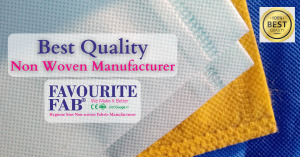
We can make products to satisfy our customers' bulk requirements due to our advanced infrastructure plant. We have actually sculpted an excellent location for ourselves as pp non-woven fabric producer in Kerala in both regional and international markets as one of the most trustworthy one-point provider for different products such as Geotextiles, PP Woven polypropylene fabric, PP/ PET Spunbond Nonwoven, and so forth. With 11 years of enriched experience, we have expanded multi-fold and now have procedures in the United Statesand India.
OBTAIN CALL FROM OUR SALES MANAGER
Spunbond Nonwoven textile
Spunbond is very adaptable, fulfilling the requirements of a vast array of products in the clinical, sanitary, as well as commercial markets. The cloth is breathable, soft, light, chemical immune, safe, as well as eco-friendly.
We offer a varied array of Nonwovens to our customers in Chennai, Coimbatore, Madurai, Tiruchirappalli, Tiruppur, Salem, Erode, Vellore, as well as other cities of karnatka, every one of which have a variety of applications in the medical area. These are made using ingenious reicofil lines from reifenhauser, Germany, and have exceptional skin-friendliness features. As a result of this attribute, the nonwoven is optimal for hygienic items.
Our product variety uses exceptional features such as breathability, water absorbency, UV resistance, nontoxicity, soft qualities, and also many more. Additionally, it is readily available in a wide range of shades, sizes, and weights.
Nonwoven textile material is high popular, thoroughly in clinical, commercial, individual treatment, as well as cosmetic items as a result of their anti-static, anti-moisture, and also hydrophilic properties. These nonwovens can be found in a range of stretch wrapping and film packing choices.
The system by which the fibers are bound together identifies nonwoven materials. Nonwoven textiles been available in two varieties:
Bonding with mechanical methods (fiberentanglement).
Chemical communication (fibers are bonded together with glue-like substance).
Thermal fusion (low melt fibers are made use of, as well as warm is made use of to thaw thread).
Fabric high qualities can be controlled or turn around engineered using nonwoven components based on practical requirements such as fiber option, internet creation, bonding, and also completing procedures.
Spunbond Nonwoven Fabric Raw Material.
pp spunbond non woven fabric production procedure includes several basic material such as: Polypropylene (PP), polyamide (PA), polyester, as well as polyethylene( PE).
The following are some of the polymers that have actually been processed:.
The melt-blown approach is most typically employed with polypropylene.
Polypropylene is basic to work with and also generates an outstanding web.
Melt-blowing polyethylene into fragile fibrous internet is much more tough than melting polypropylene.
Because of its melt flexibility, polyethylene is challenging to attract.
PBT is very easy to work with as well as creates webs that are extremely soft and carefully fibered.
Polycarbonate creates webs with unbelievably delicate fibers.
Polystyrene creates a product that is exceptionally soft as well as fluffy, with virtually no shot problems.
Spunbond Nonwoven Fabric Process:.
We utilize the most up to date pp spunbond non woven manufacturer process, "Recofil II" Double Beam, to develop Spunbond Nonwoven Fabric.
Spunbond Nonwoven textiles are used a continual procedure that transforms a fundamental thermoplastic material (Polypropylene) into an internet of continuous filaments. Thousands of fibers with a diameter of approx. 20 microns are melt-spun from polypropylene granules utilizing jets (2.8-3.0 dtex).
These very tiny filaments are evenly put down in a three-dimensional framework that is arbitrary. The internet is after that fed right into a schedule, which makes use of heat to solidify the internet right into Spunbond textiles.
We have a firm commitment to R&D, CSI, and also sustainability as a packaging and also Lamination Film supplier as well as designer to serve our customers with top notch products, originality, and also superior customer support during and also after-sales. On top of that, we are regularly enhancing our modern technology based on feedback from our clients, with the utmost goal of becoming your long-lasting companion. we have a track record for premium items as well as timely, reliable customer service.
1 note
·
View note
Text
THIN FILM DEPOSITION BY THERMAL EVAPORATION METHOD
https://www.linkedin.com/posts/vac-coat-4504b2187_thin-film-deposition-by-thermal-evaporation-activity-6662976559479169024-G8CK
Thermal evaporation is one of the most popular among the deposition methods. Simplicity of operation and proper speed are the notable strengths of this deposition method. Thermal evaporation is one of the Physical Vapor Deposition (PVD) methods during which a thin film is deposited on the substrate during a physical process.
Thermal deposition mechanism
In the process of thermal evaporation, the target material is located inside an evaporation source (boat, coil, and basket) which is heated by the passage of electric current. The target material inside the evaporation source is heated to the evaporation point. Because heat generation is due to electrical resistance of the evaporation source, this method is also called resistive evaporation. After evaporation, the molecules of the target material move to the substrate and form a thin film on the surface of the substrate. Many materials can be deposited using this method, including Aluminum, Silver, Nickel, Chromium, Magnesium, etc.
One of the important features of vacuum evaporation systems is their ultimate pressure. In the process of thermal evaporation, if the evaporated molecules of the target material in their path to the substrate collide with the molecules of gases in the chamber, they will undergo undesired changes in their path and this will negatively affect the quality of the sample coverage. To prevent this, the thermal evaporative deposition process must be performed in a high vacuum environment. At a pressure of 10-5 Torr, the mean free path length of the molecules is 1 meter. This means that the average distance traveled by the molecules in the vacuum chamber, before colliding with another molecule, is 1 meter. As a result, it can be said that the molecules of the vaporized material can reach the substrate in a straight line without colliding with another molecules.
On the other hand, the presence of background gases in the deposition chamber may contaminate the deposited thin film. For example, the presence of a small amount of oxygen or moisture during thermal evaporation in the process of Organic Light-Emitting Diode (OLED) and organic photovoltaic devices fabrication, makes the active functional parts of these devices inefficient. By reducing the pressure of the deposition chamber to 10-6 Torr, the purity of the deposited thin film and the performance of the devices will increase significantly.
Applications of thermal evaporation deposition
Thermal evaporation deposition has variety of uses, including the following.
Creating metal bonding layers in devices such as OLEDs, solar cells and thin film transistors.
Create a thin layer of Indium on the back of the ceramic sputtering targets to connect the metal backing plate.
Deposition of metal thin film (often aluminum) on polymers for use in food packaging and heat and sound insulation.
Metallized polymer films are polymer films that are coated with a thin layer of metal (usually aluminum) using thermal evaporation deposition method. These films have a shiny, metallic appearance like aluminum foil, but are lighter and cheaper than aluminum foil. These films are mostly used for decorating purpose and packaging food products.
Polypropylene and polyethylene terephthalate (PET) polymers are commonly used for metallization. Metallized PET films are used in NASA spacesuit to reflect heat to keep astronauts warm. PET in firefighter’s uniforms is also used to reflect the heat radiated from the side of the fire. Other applications of these metallized films, which are deposited by thermal evaporation coating, include emergency aluminum blankets, which are used to conserve the shock patients body heat. Metallized PET films are also used in the construction of anti-static electricity and anti-heat and soundproof enclosures in aircraft.
Thermal evaporation deposition system model DTT
Desktop, Turbo pumped, Thermal Evaporation deposition system (DTT) is a small vacuum deposition system that is suitable for research laboratories due to the small footprint. The DTT is equipped with a Turbo Molecular Pump (TMP) and the ultimate pressure of the deposition chamber reaches to 7*10-7 Torr. Thermal evaporation deposition at this pressure creates thin film with good quality and performance. The Turbo Molecular Pump used in the system are supplied by Leybold, a Germany company. TMP are much smaller than diffusion pumps with the same efficiencies as diffusion pumps. They occupy very little space in the laboratory.
In comparison with a diffusion pumps, the required time to reach the desired pressure in a thermal evaporation process is less than half when TMPs are used.
TMPs do not need cooling water and oil. This eliminates chance of returning oil to the vacuum chamber when compared with diffusion pumps.
Relatively small vacuum chamber of this deposition system allows the pressure of the device to reach its minimum in a short time. Pressure of the deposition environment during the thermal evaporation process plays a significant role in the process of sample coverage and the quality of the thin film deposited by this method. For detailed information about the pressure inside the vacuum chamber, reliable and accurate pressure gauges need to be used. For this purpose, the pressure gauge used in the DTT model deposition system is full range pressure gauge made by Leybold Company which has the ability to display pressure in the range of atmosphere pressure up to 10-9 Torr.
The DTT is equipped with three separate evaporation sources that make it suitable for multilayers deposition.
The sample holder in the DTT device has the ability to move and position accurately in front of any evaporator source (Boat selection option). The user can deposit multilayers without breaking the vacuum and just by moving the electrical connection to power each evaporation source. Another feature of this thermal evaporation deposition system is the possibility of creating alloys. Different materials can evaporate from two or three evaporation sources simultaneously in a controlled manner by connecting two or three sources of evaporation to the power supplies at the same time and with independent control of each other,
Separating walls embedded between evaporation sources prevents the effects of various evaporating materials on each other and contamination.
DTT thermal evaporator is equipped with a Mass Flow Controller (MFC) for gas injection into the vacuum chamber for deposition of thin film in the presence of background gas. The high accuracy of the MFC used in the DTT thermal evaporator system allows the user to inject gas into the vacuum chamber with accuracy of one SCCM.
Another feature of DDT system is preheating to remove contaminants from evaporative materials before the coating process. This is to prevent deposition of the contaminants that rises from the evaporation sources or evaporative material due to the heat before evaporation of the main material. During the preheating process, electronic shutter embedded inside the vacuum chamber will be placed in front of the substrate and prevent deposition of the contamination on the samples.
For more information about the DTT thermal evaporation device, visit the website of Vac Coat Ltd.
http : // vaccoat . com / products / desk – thermal – evaporator /
1 note
·
View note
Text
#896: ‘The Housemaid’, dir. Kim Ki-young, 1960.
All aboard the train to a very confusing and conflicting film analysis! We’re now at the point in the list where, as I move through what’s left alphabetically, I’m either looking at films that are recent and were added to the list after I moved through that section, or films whose synopses, for whatever reason, didn’t grab me. A lot of the films that are left are mediocre, falling into that category of films that are important, but not interesting or enjoyable. More frequently than I expected, though, these films turn out to be spectacular films damned by a lackluster entry in the book, coupled with a stub of a Wikipedia article. The Housemaid is one of those films... almost. In its 112-minute runtime, the first 109 minutes are spellbinding, thrilling and compelling. As for the last three... we’ll get to that.

For now, let’s start with what this film does well, and why it’s so underrated. Regarded by the Criterion Collection as a critique of post-war consumerist Korean society, the plot of The Housemaid revolves around a piano teacher (Kim Jin-kyu) whose home life plunges into chaos after he hires an erratic housemaid (Lee Eun-shim) who rapidly becomes obsessed with obtaining his love. The tautly-strung love triangle between the pianist, his wife, and the housemaid is made even more complicated by several factors: the couple’s two children, a new child on the way for both the wife and the housemaid, and some truly epic foreshadowing of the role rat poison will play in the narrative.
The out-of-control spiral is also precipitated by the pianist’s fraught relationship with several other women. As the leader of a music club for the women who work at a textile mill, he is the object of many affections. Early in the film, he’s pursued by a young woman whose love letter gets her forced out of the factory’s dormitories under a draconian social policy. This woman’s suicide (at least according to several synopses; the subtitles I have suggest an unspecified ‘illness’ presumably brought on by her broken heart), and the subsequent revelation that the love letter was put forward at the behest of another young woman - also in love with the pianist - who now takes piano lessons from him, begins to weave a complicated story of lust and love.
As these previously-mentioned characters evacuate the narrative at roughly the same time, the housemaid enters the vacuum. The previous anxieties the pianist has felt, about the effect any whiff of impropriety could have on his family, who are struggling to pay for a larger house they have purchased, would have been bad enough with a factory worker. The housemaid’s seduction of the pianist promises even more radical fallout. She isn’t the only factor in the pianist’s state of mind, but she is the most disastrous choice... and, thanks to those other characters being out of the way now, she has rapidly become the only one. Alarm bells ring with her on Fatal Attraction levels: one of the first tasks she undertakes at the house involves beating a rat to death.

The rats are one of many interconnected motifs in the film, which is another way in which it shines. The rat problem in the new house is a sign of its size and imperfection; a corruption at the heart of the couple’s ideal life. In order to manage the new material wealth, they must bring in a housemaid, which complicates things between them. As well as the trapped rats, the pianist brings home a pet squirrel for his children, which exercises in its cage - the daughter, who struggles to walk, assumes immediately that the exercising squirrel is meant as an object lesson for her. These creatures, and their ability to flourish in these circumstances, tentatively proposes a happy ending to all these human crises, but the rats’ demises at the hands of the housemaid show a more likely scenario. Intricate tangles are another motif: the wife sews; the pianist and the housemaid both work tangentially at a textiles factory, and the children play, in a stunning long take over the opening credits, a cat’s-cradle game of bewildering complexity.
While these motifs are somewhat obvious in their meanings, the ways they influence each other and complicate each others’ meanings indicate a strong understanding on the director’s part of how he intends his story to work. It’s what makes the last few moments so confusing.
The middle of the film is so gripping that it’s easy to forget there is a scene at the very beginning that doesn’t make a lot of sense. It shows the characters sitting in the new house, with the pianist reading to his wife a story from the paper about a man who falls in love with his housemaid. This scene doesn’t seem to fit with the story’s chronology at all, because none of the emotions line up - there’s simply no point at which the relationships are in a state that would make this scene possible. This gets answered in the final scene, however, and it’s so jarring that it threatens what came before it.
Surveying the disastrous consequences, the wife says ‘If only I hadn’t wished for a bigger house’, which is an odd place for a character to put the blame, but does explain the anti-consumerist readings of the film. After that, it’s revealed that the whole thing is a story within a story, and it’s presented as another cautionary tale, this time about men needing to watch themselves around women. This is bizarre on a number of levels: both the doubling-up of morals, and the fact that neither moral presented seems to be adequate for the effective thriller we’ve just witnessed.
So, ninety-eight percent of this film is a masterpiece, but the remaining two percent is bewildering. What else can be said about it? Turns out, there’s something this film does that shows how film cultures develop.

We talk a lot about how cinema is influenced by other art forms - most often, painting, theatre and literature. It’s worth considering exactly how the norms of Western architecture have impacted the rules of our filmmaking, though, and how a different architectural vocabulary changes the filmic one. In both American and Korean films, there is a tendency to avoid actors turning away from the camera when delivering dialogue. This means that most American films avoid dialogue when a character is casually closing a door (as it’s usually done without facing the door). The sliding doors of the pianist’s house, though, mean that dialogue in The Housemaid is frequently delivered with a closing door as punctuation, cutting directly between two characters with no other movement required.
Elsewhere, the opening and closing of sliding doors is used to change the physical space. The main sliding door, as seen above, reveals or conceals the main stairway. Unlike hinged doors, though, the sliding door remains at the same depth-of-field throughout its movement: the eye travels between the two planes of action without getting distracted by the movement through space of what separates them. It’s arguable that this change of architectural space is partially what motivates the symmetrical and square compositions of Yasujiro Ozu, but Kim Ki-young’s camera also moves through these spaces in a measured way, while Ozu’s is almost always static. What these styles share, though, is a clarity of space that is absent in American and European cinema of the time. There’s a lot of other films to examine through this lens, but this is a decent start for that discussion.
So, maybe I need to be more open to what’s left on the list. It’s not just that these films are sometimes enthralling (when they’re not about World War II, anyway), but that they illuminate the assumptions we make based on what we’ve been exposed to before. That’s what cinema, like most of what’s good in art, should do.
14 notes
·
View notes
Text
Drabble Title: Sweetheart
Notes: Just a little drabble I thought up. I hate you for enabling me @egopocalypse
Warnings: Customary creepiness from our lovely piece of glitchy green moss
There was a hand playing with his hair in a soothing stroking manner. His head was on someone's lap and normally, he'd be embarrassed and would immediately throw himself out of that person's personal space but right now, he felt incredibly weary. His body was heavy and his tongue felt like tar was weighing it down. He attempted to open his eyes but it was as if they were glued down.
" Sh̶hh͡.̨.̸. ̶I͝t̵'s ҉o͟ka̛y͏,͏ " crooned the voice which sounded like a scratchy glitched audio in the computer.
... Glitched?
But when he tried to chase that line of thought, the static that had been lurking at the back of his mind grew in volume until it drowned out all other thoughts except the drowsiness and the hand that was playing with his hair.
" Y̢ou͠ ̨don͏'t h͟a̸v͠e҉ ̶t̢o ͢thi̵nk ͝ab̶ou͢t̀ ́a̕ǹyt̵hi̵n͟g̵ el̴s͘e bu̢t͞ ̸me͘,̡ do͠ll. " The voice continued with that soft tone as he felt himself getting dragged down deeper into the ocean of static. " T͠h̶at's̴ ̨i͢t.͟..͠ Yo̕u͟ ͞do͏n҉'t ̢ha҉ve͟ t̀o w̸o͏rry̸ ͘ab͡out҉ ͜a̕ny͏th҉ìng̢.̛ "
Anti smiled monstrously as a subtle film of static flickered over Chase's eyes before the glazed over baby blue eyes fluttered close. He continued petting his doll's hair as he sat on his throne with the ex-father sat on the floor with his head on his lap.
The demon lazily dragged his eyes over the screens that was floating in front of him showing the other egos who were busy searching for Chase. He leaned down and pressed a claiming kiss on his favorite puppet's forehead and giggled softly when Chase whined in a needy manner in his static induced sleepiness.
" I can't ̸w̵a͠i͏t̢ ́f̀or t́he̴m ͡t҉o̷ śee ̕y̷o̶ù,̴ ̵sw͏e͏eth̶e̕art~̛ "
86 notes
·
View notes